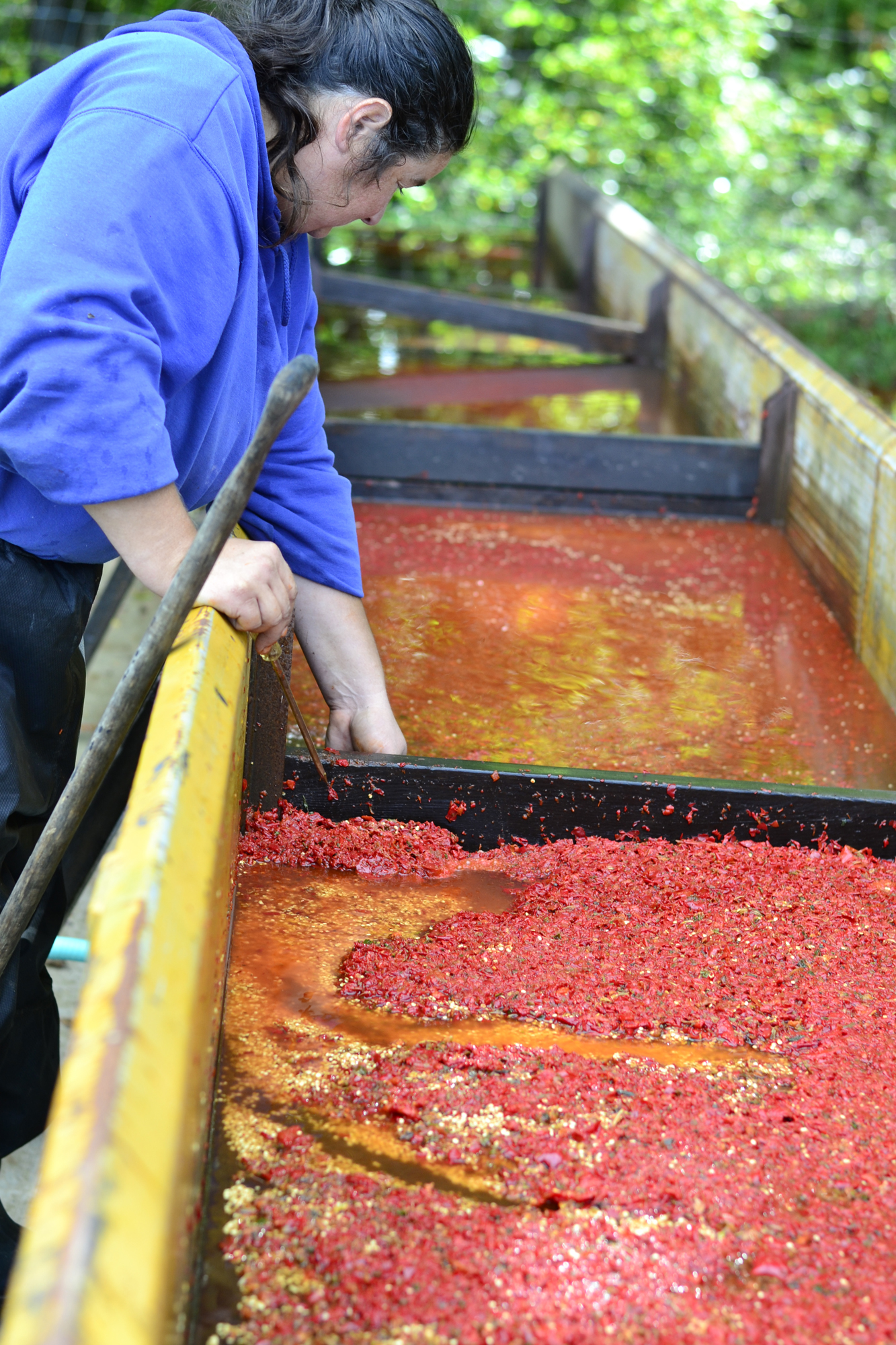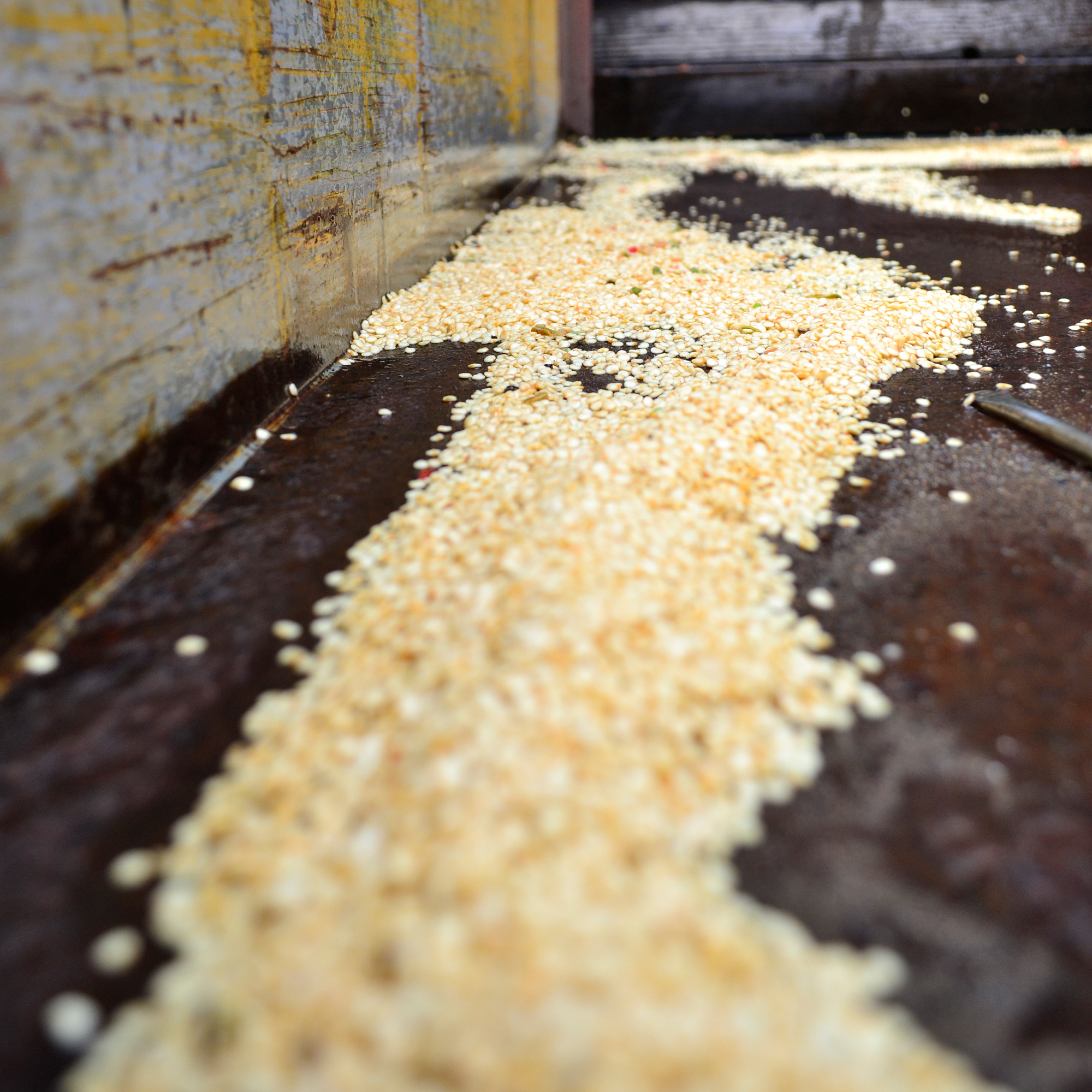The Search For Gold: Territorial’s tomato seed processing
The small town of Cottage Grove, Oregon was established in the 1800s at a time when gold was discovered in the Cascade foothills about 35 miles east of town. Today if you travel from Cottage Grove to the Bohemia gold mines, you’ll pass a 75 acre farm where a different kind of mining occurs. London Spring Farms is the home of Territorial Seed Company’s trial and seed production operations. In many ways, producing seed has parallels to gold mining. At Territorial, we see seeds as little nuggets of life. These tiny treasures hold the promise for a wealth of delicious food. Almost inconceivably, a 6-foot tall plant will burst from a minuscule speck of a seed and yield baskets of harvest for the family. Some of the techniques we use to extract seed from our farm-grown tomatoes are nearly identical to the traditional methods of extracting gold ore from pay dirt.
Tomatoes are a mainstay of Territorial’s seed production, and the process for harvesting the seed is a very elaborate one. It begins with hand-picked fruit that’s been allowed to ripen fully on the plants. We harvest the tomatoes into large bins and then crush them to loosen the seed and juice from pulp and skin. With the help of a screen and centrifuge, the juice and seed are separated from the pulp/skin mash. We compost the mash, and the juice/seed mixture is allowed to rest in a container. Over a period of 1-3 days the juice and seed combination begins a natural fermentation process. This fermentation has a dual purpose: breaking down the protective jelly-like coating that covers the tomato seed and also killing any disease that may be present. Once the gel is sufficiently dissolved, the seed is ready to be washed.
Borrowing a time-honored gold mining technique, we employ a sluice box to extract the seed. Traditional gold miners have used similar sluicing methods to wash soil and gravel away while heavy gold sinks and is trapped by riffles in the flume. Our flume is a shallow, long trough positioned at a gentle decline and fitted with several baffles. The seed/juice mixture is poured in the top of the trough, and a steady stream of water washes down from the top. The baffles act as miniature dams, disrupting the water flow and allowing the heavy, dense seed to settle on the bottom while the tailings—lighter vegetable residue and any infertile seed—floats away. Once the water runs clear and the seed is clean, we collect it and allow it to dry in a commercial-grade food dehydrator at 95°F for 2-6 hours.
At this point, the tomato seeds are clumped together, their naturally fuzzy seed coat holding them in loose clusters. Just like refining ore into pure gold, we need a few final steps to purify this raw seed and get it to a garden-ready state. The first phase involves removing the seeds’ fuzz. This velvety covering tends to make the seed difficult to handle and also provides a hiding place for detrimental molds. Tumbling the seeds together in a drum for about 15 minutes will rub off the fuzz, allowing them to move through the packaging process unimpeded. The seed then passes through a screen and air blasting system that grades it and separates it from any remaining dust particles. At last, we have the final product: pure, viable seed. Before it is packaged and shipped out to our gardeners, it will undergo a battery of tests to insure that it meets our germination standards and is free of diseases.
Our hot water bath treatment unit precisely controls the water temperature so seed can be safely treated for disease causing organisms without the seed itself being damaged. We treat multiple varieties at once by placing them in individual mesh bags, and putting the individual bags into larger mesh bags for quick removal. The seed is then placed in a quick drying unit where it is dried in under 30 minutes to an appropriate moisture level for storage.
Proudly, our farm’s operations are far from destructive. Where gold mining can leave vast areas stripped of vegetation and polluted with harsh chemicals from the refining process, our sustainable farming practices are designed to renew and revitalize. Composting the vegetable residue and recycling the sluice water are two of the many ways we limit waste and support our organic and biodynamic system. The gold we seek offers culinary and nutritious rewards that home gardeners across the globe can raise and enjoy.
Author: Kat B.







